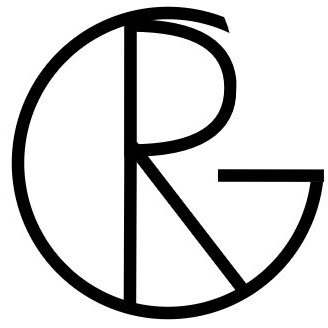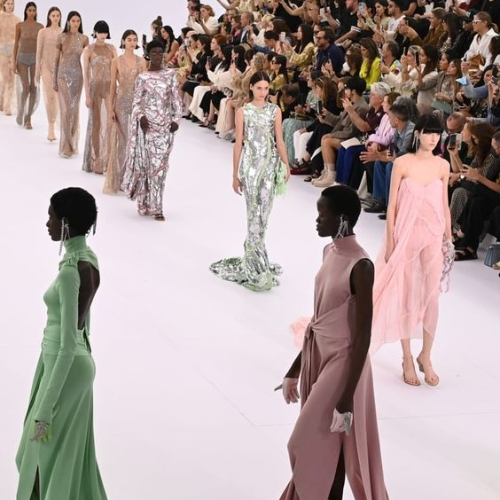For weeks, the glitz and glamour of the Fashion Weeks of New York, London, Milan, and Paris have flooded our social media feeds. During the highly anticipated event, designers showcase their latest collection, celebrities grace the front rows, and consumers eagerly await the next trend. Countless headlines have highlighted the SS24 fashion shows, and viral runway videos have continuously circulated online.
Yet amidst all this content, one critical issue has been absent: Fashion Week is far from sustainable.
The Problem With Fashion Week
Numerous factors contribute to the environmental impact of Fashion Week. In this section, we delve into the key reasons.
Excessive Travel
Fashion week involves the travel of many individuals. Designers, models, journalists, celebrities, and other attendees come together from around the globe. This massive influx of people contributes significantly to the event’s carbon footprint. Private jets, long-haul flights, and many car rides are common modes of transportation during Fashion Week, leaving behind a trail of emissions that harm the environment.
The Carbon Trust and ORDRE collaborated to collect data on the carbon emissions generated during the different Fashion Weeks in 2018. Their research revealed that 241.000 tonnes of carbon were released due to business travel associated with the event. It was found that New York Fashion Week had the worst environmental impact, followed by Paris Fashion Week.
Excessive waste
Most fashion brands require six months to create a 15-minute fashion show, yet it is not enough. Alongside the beautiful designs, extravagant sets and props are needed to make their show most memorable. These elaborate sets generate substantial waste, as most remain unused after the show. Furthermore, these fashion shows consume excessive amounts of water and electricity.
What’s more, most of the stunning garments created for these spectacular shows never see the light of day beyond the runway. Instead, they end up in landfills, an unfortunate fate for such carefully designed pieces. And why is that? Well, it’s no surprise, really. Many of these creations, while breathtaking in their artistry, aren’t quite practical for your average person’s everyday life.
Trends and overproduction
One of the most glaring issues with Fashion Week is the fact that it relentlessly supports overconsumption through trend cycles. Fashion brands put out at least two collections each year (Sping/Summer and Fall/Winter), making consumers believe they must constantly update their wardrobes. As FastCompany said, “Fashion Week is meant to artificially cultivate trends and signal that the previous season’s clothing is obsolete.”
Should We Get Rid of Fashion Week?
The most sustainable solution to the problem of Fashion Week is, of course, to shut it down completely. However, this solution is just not viable. Fashion Week is anticipated for more than just the Glitz and the Glamour.
Fashion Week is a moment of high communication for the industry’s stakeholders. Magazines, retailers, and buyers all rely on these events to remain ahead of emerging trends. Furthermore, Fashion Week is an important source of creativity, inspiring ideas, and innovations that shape the fashion landscape for the next six months.
Beyond its creative influence, Fashion Week is crucial in generating employment opportunities across multiple sectors. From marketing and design to research and manufacturing, the fashion industry is a vast ecosystem with a far-reaching impact. Consider the economic implications: New York Fashion Week alone injects a staggering 11 billion dollars into the workforce, contributing an additional 2 billion dollars in tax revenue annually. Meanwhile, London Fashion Week fuels the city’s economy with an impressive 374 million. In Milan, Fashion Week accounts for 160 million dollars in revenue and supports 12.5 percent of Italy’s manufacturing industry employment.
These numbers underscore Fashion Week’s undeniable significance to a country’s economy and job market. This importance was acutely felt during the pandemic when the absence of Fashion Week led to economic losses in the four major fashion capitals—New York, Milan, Paris, and London. They suffered a staggering shortfall of over 600 million dollars in economic activity due to the pandemic.
What is Copenhagen Fashion Week Doing Different?
Copenhagen is not considered as one of the four Fashion Weeks, however, their fashion week is increasingly catching the attention of the media and designers. And rightfully so, because Copenhagen Fashion Week is doing it differently than the other fashion weeks. For designers to be able to show their collections during Copenhagen Fashion Week, they need to meet a set of sustainability standards to be considered for the schedule.
The minimum standards cover six focus areas covering the entire supply chain, including 18 action points in total. The standards are set by the organizers of Copenhagen Fashion week and third-party sustainability consultants. The standards are meant to push fashion brands in the right direction by making them more environmentally friendly and ethical.
An example for each of the focus areas is:
- Strategic Direction: We do not destroy unsold clothes from previous collections
- Design: We find a second life for our samples
- Smart Material Choice: At least 50% of our collection is either certified, made of preferred materials or new generation sustainable materials, upcycled, recycled or made of deadstock
- Working Conditions: We are committed to exercising due diligence in our supply chain according to international guidelines and standards and work with our suppliers to ensure e.g., freely chosen employment, secure employment, or no child labor
- Consumer Engagement: Our in-store and online customer service staff is well-informed about our sustainability strategy
- Show: Our set design and show production is zero waste
You can read the full Minimum Standards to participate in Copenhagen Fashion Week here.
What are Brands Doing?
Clearly, Copenhagen Fashion Week sets a commendable standard for the fashion industry to follow. Nevertheless, it’s encouraging to note that several fashion brands participating in other fashion weeks also take active steps to reduce their environmental impact.
In 2020, Gucci took a significant step forward by committing to making their fashion shows entirely carbon-neutral. This pledge reflects a growing awareness of the need for sustainability within the industry. Notably, brands like Stella McCartney and Collina Strada have been at the forefront of this movement, crafting their collections primarily from recycled and deadstock materials.
Moreover, Jonathan W. Anderson, the creative director of Loewe, revealed another approach during the Global Fashion Summit. He explained that the props used in their fashion shows are not discarded but instead repurposed and transported to their stores. These props are used as decorations, thus preventing them from ending up in landfills.
In addition to these sustainability efforts, there’s a noticeable trend among brands to create more timeless designs. Take, for instance, Victoria Beckham’s fashion show—an exquisite display of elegant and chic designs meant to withstand the test of time. This shift towards creating enduring pieces challenges the throwaway culture often associated with fast fashion and encourages consumers to invest in quality, enduring garments.
Sources
You can find the source for the header pictures here.




